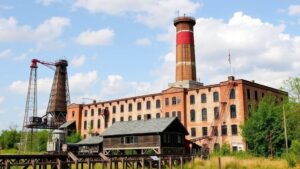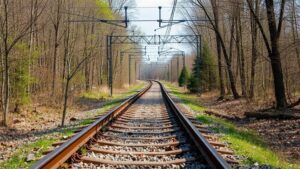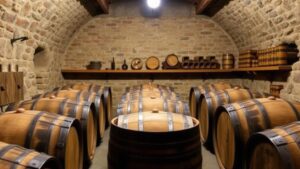Training AI Models to Predict Lost Relic Zones in Forgotten Agricultural Systems
Training AI Models to Predict Lost Relic Zones in Forgotten Agricultural Systems
In recent years, the intersection of artificial intelligence (AI) and archaeology has garnered significant attention. Researchers are increasingly employing machine learning techniques to uncover lost relic zones associated with ancient agricultural systems. This article explores methodologies, examples, and the implications of training AI models to predict these zones using historical data and modern computational techniques.
Understanding Agricultural Systems and Their Evolution
Agricultural practices have evolved considerably over millennia. Ancient societies, such as the Maya in Central America and the Harappans in the Indus Valley, developed sophisticated systems of farming that were intricately linked to their societal structures and environmental contexts. But, many of these agricultural systems have disappeared from collective memory, often due to climatic changes, economic shifts, or geological events.
The loss of these intricate farming methods results in risks not only to cultural heritage but also to agricultural biodiversity. A study by the Food and Agriculture Organization (FAO) estimates that over 75% of global food diversity has been lost due to industrial agricultural practices, making the recovery of historical methods increasingly relevant.
Machine Learning Techniques in Archaeology
Machine learning refers to the use of algorithms that enable computers to learn patterns from data. In archaeology, particularly in predicting lost agricultural zones, machine learning can analyze various datasets, such as:
- Satellite imagery to identify landscape features
- Historical climate data to understand environmental changes
- Archaeological surveys indicating past human activity
- Geospatial data revealing topographical characteristics
One prominent technique involves supervised learning, where a model is trained on labeled datasets. For example, an AI model can learn to identify agricultural relics by being trained on data from known archaeological sites, allowing it to make predictions in unexcavated areas.
Case Studies: Successful Useations
Several projects have already demonstrated the effectiveness of training AI models in predicting lost agricultural zones. One notable case occurred in the southern regions of the United States, where researchers utilized historical agricultural census data and modern machine learning algorithms to identify potential sites of ancient farmsteads.
Another case involves the use of AI-enhanced satellite imagery analysis in the Andes region of Peru, where researchers discovered ancient terraces that were previously unknown. By combining data from LiDAR (Light Detection and Ranging) technology and machine learning, they were able to identify large areas of previously forgotten agricultural zones.
According to a report published in Remote Sensing journal, researchers effectively mapped over 100 square kilometers of lost agricultural zones with an accuracy of 85% by employing convolutional neural networks on satellite data.
Challenges and Limitations
Despite the promising prospects, training AI models to predict lost relic zones poses several challenges:
- Data scarcity: Comprehensive historical data may be limited, especially in less studied regions.
- Algorithmic bias: Models trained on biased datasets may lead to inaccurate predictions, requiring careful selection of training materials.
- High computational costs: Advanced machine learning techniques necessitate significant computational resources, which can be a barrier for some research projects.
Addressing these challenges requires collaboration between archaeologists, data scientists, and policymakers to ensure the development of accessible frameworks and data-sharing initiatives.
Future Directions and Implications
The application of AI in predicting lost relic zones offers significant implications for the fields of archaeology and sustainable agriculture. By successfully identifying ancient farming systems, researchers can not only gain insights about historical cultures but also draw lessons to apply in contemporary sustainable agricultural practices.
Future directions may include the development of open-source platforms that democratize access to AI trained models and datasets, enabling smaller institutions and independent researchers to contribute to the field. Plus, integrating socio-political contexts in model training could lead to richer datasets that better represent diverse agricultural practices.
Conclusion and Actionable Takeaways
The intersection of AI technology and archaeology promises revolutionary insights into forgotten agricultural systems and their lost relic zones. Stakeholders in both fields must prioritize collaboration, resource-sharing, and interdisciplinary research to maximize the potential of these methods.
Key takeaways for practitioners include:
- Invest in robust datasets that accurately represent historical agricultural practices.
- Use advanced machine learning techniques such as convolutional neural networks for spatial analysis.
- Foster collaborations among archaeologists, computer scientists, and historians to refine predictive models.
By understanding and implementing these approaches, researchers can not only resurrect lost agricultural heritage but also provide valuable insights for modern farming practices worldwide.



